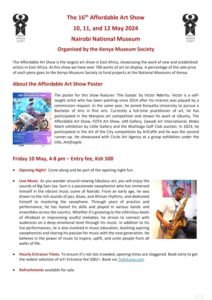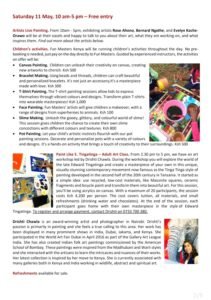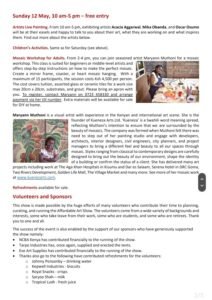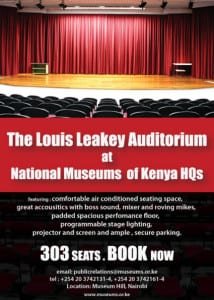Spending time with past KMS chair, Peta Meyer
By Kari Mutu
Peta Mayer Meyer was the chairperson of the KMS council in 1999-2000. She joined KMS in 1996, after relocating from Uganda. “My friends in Kampala had already told me about KMS, so I made a beeline for the Museum soon after moving to Nairobi,” says Peta. A keen birder, Peta’s main interest at the time was the weekly bird walks. After some time, she took over management of KMS’s Tracker newsletter, bringing along her wealth of knowledge as an editor and book designer. “It was a cyclostyled sheet at the time and I produced the first computer version,” she says.
Eventually, she joined the KMS Council and became the main coordinator of the Know Kenya Course, an annual public workshop in the 1980s and 90s. “Ironically, it left me so busy I could no longer join the weekly bird walks.”
******
What do you enjoy about being a KMS member?
KMS gives me an opportunity to meet like-minded people interested in the cultures and the natural history of Kenya. I enjoy going to the evening talks by museum researchers and, more recently, attending events by webinar. KMS also organises interesting outings and safaris around the country.
Tell us about the Know Kenya Course
It was the biggest fundraiser for KMS. The KKC consisted of a series of morning lectures and afternoon behind-the-scenes visits that stretched over 2 weeks – and that was the shortened version! The original KKC lasted about 6 weeks, with a mix of day and evening lectures and activities in both Nairobi and Mombasa; but that was before my time. Lectures were held in the auditorium of the Nairobi Museum and popular speakers could fill the hall. Staging the KKC took an army of volunteers, right down to door clerks armed with torches in case of blackouts and one designated “Mama Rosy” whose job it was to make sure the washrooms never ran out of toilet paper.
How have you seen KMS evolve over the years?
One of the big differences is that 20 years ago in Kenya, far fewer of our female members worked outside the home. Most expatriate spouses (99% of them women) could not obtain work permits, no matter how qualified they were. So KMS had more volunteers, we could hold more ambitious events, and our activities also drew far bigger audiences. The KMS office and the museum guide programme were totally staffed by volunteers.
What was required to become a guide at the Nairobi Museum?
Fulltime attendance at the KKC was a prerequisite for training to be a museum guide. With all our volunteers, KMS could offer guided tours in many different languages. For languages other than English, you had to book a guide in advance. I remember one occasion when a couple of visiting priests from the Vatican booked themselves a guided tour of the palaeontology gallery.
Currently you edit KMS’s Kenya Past & Present journal, tell us about this work?
As an editor it is always interesting getting to know researchers and learning new things. Sometimes writers approach KMS; at other times I will read an interesting topic somewhere and track down the author to do an article for us.
One of the original aims of KP&P was to publish original research done by museum staff, particularly those funded by KMS. An example is the discovery of plant fossils dating during the eruption of Mt Kenya millions of years ago, and how the fossil stone is now being dug up for building material.
However, KP&P is unique in not being a specialist journal. It publishes on an eclectic range of topics; some of them don’t fit into easy categories. A good example is an article some years back on the Art Deco houses of Parklands, Nairobi. Another is Kenya’s Asian-African heritage. More recently, the ‘lost’ Portuguese monuments in Mombasa.
Why do you think people should visit the national museums and join KMS?
Aside from the cultural artefacts from generations past, and the gallery on Kenyan history, everyone should visit the palaeontology gallery at the Nairobi Museum. Kenya is famous for its research into human origins and researchers come from all over the world to visit what we have on our doorstep every day. As a KMS member you can join guided tours of the palaeontology department and other departments. And, of course, join the KMS safaris, which take you to places you won’t find in the tourist brochures.
Talk about some of the KMS trips you have taken
KMS trips are a great way to visit places without having to organize things yourself. You never know quite what to expect and you will make new friends.
On a trip to the Rift Valley, we stayed in Iten where we kept a lookout for famous marathon runners but instead, we were enraptured by paragliders taking off into the sky by simply jumping off the cliff next to the lodge.
On a trip to Samburu, we climbed to the top of an extinct volcano – I’ve forgotten the name but it was obviously a popular climb because the track was littered with plastic. So we collected bits of plastic all the way down.
As a birdwatcher, one unforgettable trip for me was to the World War I battlefields of Taita-Taveta. Driving through Tsavo West coincided with the arrival of steppe eagles, which migrate from Russia to spend the winter in Africa.
That day in Tsavo, the flock must have literally just arrived because there were large brown eagles on trees, in the bushes, even standing on the grass next to the track. You never normally see so many eagles close together like that. What a privilege.











































